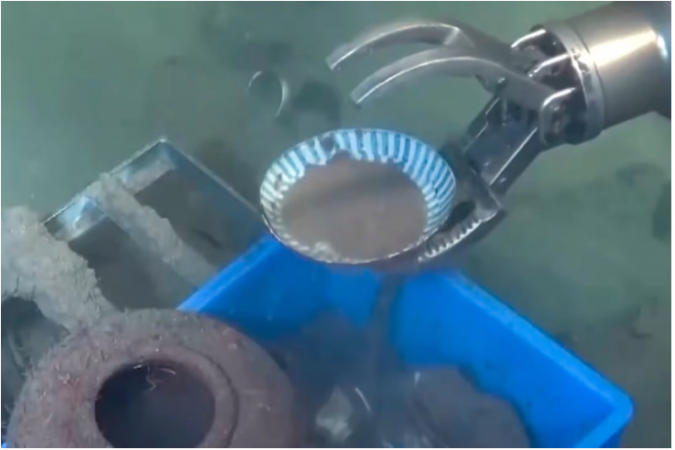
BEIJING: In an unprecedented archaeological discovery of the disputed South China Sea, Chinese marine researchers have claimed to have found three ancient trading ships.
The wreck was discovered in the vast waterway between China's southern coast and the Xisha Islands, also known as the Paracels and claimed by Vietnam, according to a report by state broadcaster CCTV on Sunday.
The mass surveillance technique was used by a team of scientists and engineers from more than ten research institutes, which some observers say could also be beneficial to the Chinese military.
According to the report, more than 60 artifacts were found, examined and pulled from depths of up to 3000 meters (about 2 miles), including pottery, porcelain, purple-pottery, copper coins and wooden planks.
The scope of the survey was unprecedented, according to the team, and was carried out from two of China's largest research ships. They can search 100 sq km (38 sq mi) per day using new sonar hardware and technology, picking up objects as long as one meter (3 ft).
Chen Chuanxu, the project's lead engineering scientist and an associate researcher at the Institute of Deep-Sea Science and Engineering of the Chinese Academy of Sciences, claimed that despite going three times deeper than in previous surveys, due to the close human-led team more The producer was - Robot Collaboration.
An unmanned underwater vehicle takes pictures of located objects using towed sonar.
"A manned deep dive will be arranged for underwater verification, confirmation and extraction of cultural relics," Chen said. "If a sunken ship or suspicious cultural relics are found in the photographs."
The deep-diving team captured footage broadcast in CCTV reports, showing them laser scanning the hull of the potential ship, collecting sediment samples for analysis, and removing fragile objects such as pottery and porcelain. Shown for using a mechanical arm.
Further investigation is needed, according to Deng Qijiang, deputy director of the Institute of Underwater Archeology with the National Cultural Heritage Administration in Beijing, who spoke to CCTV.
Nevertheless, he claimed that the most recent survey had "established a complete set of deep-sea archaeological investigation workflows, and would pave the way for greater exploration and discovery of deep-sea underwater cultural remains in the future."
According to a Beijing sonarologist, who was not involved in the project but is knowledgeable about the technology, archaeological survey techniques will be able to find military equipment that other countries may have hidden on the ocean floor.
The sonarologist, who requested anonymity due to the sensitive nature of the subject, claimed that the US military had built several deep-sea instruments that could be used in disputed areas such as the South China Sea.
An "upward falling payload" is one of them, a piece of equipment that can be anchored to the ocean floor more than 2,000 meters below the surface and left there for five years.
According to the US Defense Advanced Research Projects Agency, a major funder of the technology, the six-meter device can be activated at any time and send sensors, drones or missiles to the surface where they can gather intelligence, decoy Can serve as, or direct attack on enemy positions.
According to sonarologists, other military seabed devices could track submarine activity, generate signals for underwater navigation, or serve as a hub for drone charging.
"It can take a lot of time and money to find and remove these tools. Usually, it's not economical for the Navy. But things could change if underwater archaeologists are interested in the same area," he said. Told.
By 2025, the Chinese government hopes to complete a five-year project that will allow it to map the ancient Maritime Silk Route from Southeast Asia to Africa.
The unidentified Chinese ships and their cargo are expected to explain China's historical status as a maritime power and support its claims on several disputed islands.
One such project involved Chinese researchers searching the territorial waters of Sri Lanka for the remains of a 15th-century treasure ship that was once part of Admiral Zheng He's fleet, reportedly one of the largest in history. was big.
Zheng led seven expeditions, procuring local goods and delivering gifts from the Chinese emperor to remote places such as East Africa.
China criticises the US for an alleged Trojan horse attack on college servers
China requests constructive de-escalation talks rather than a cap on the price of Russian oil.
In effort to revive nuclear deal Iran claims India is trying to bring the P5+1 and Tehran "closer"